The phrase “luxury modern kitchen” sparks thoughts of shiny cabinets, smooth quartz, and chrome.
It looks great, but without natural texture, these spaces can feel cold.
When I enter a kitchen with stone, wood, leather, or woven textures, the vibe changes. It feels warmer and more inviting, adding sophistication.
Natural textures are like secret spices in a gourmet dish—you might not notice them at first, but you’d miss them if they weren’t there.
Now, let’s explore how to add these textures to your modern luxury kitchen in a bold, balanced, and timeless way.
Step 1: Define the Mood Before You Add Anything
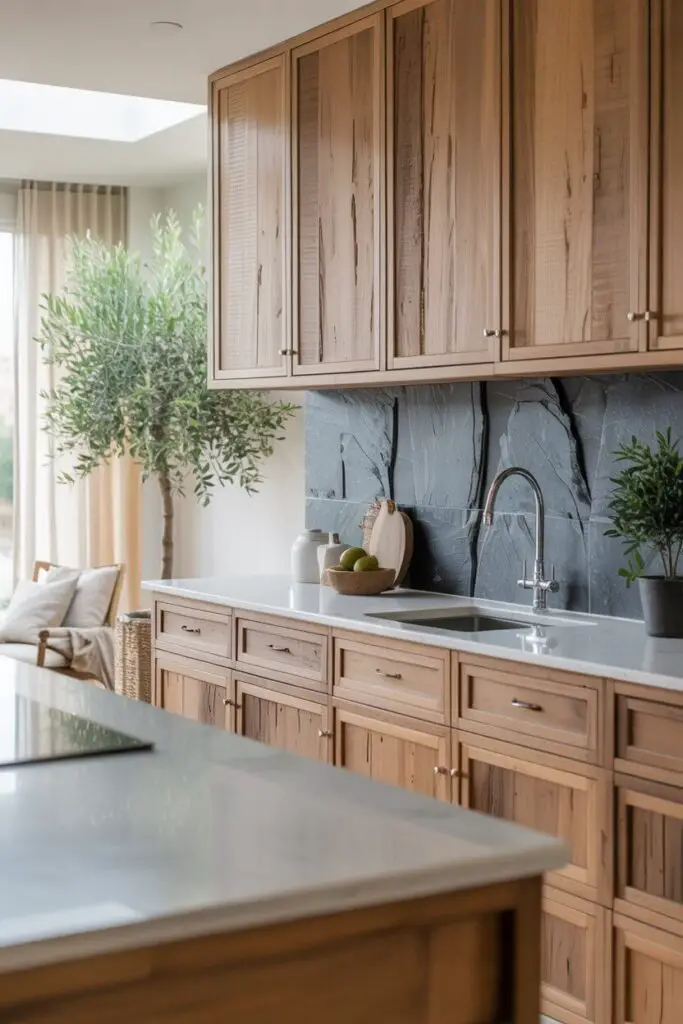
Before you start ordering reclaimed oak or marble slabs, you need a clear vision for your kitchen’s personality.
Ask yourself:
- Do I want the space to lean more warm and organic or cool and dramatic?
- Is my vibe coastal luxury, urban industrial, or European minimalism with a twist?
- Am I aiming for subtle texture layers or a statement-making contrast?
Pro tip: Your answers will guide every material choice. A modern coastal look might use bleached oak and light marble, while an industrial-modern space could pair charcoal slate with blackened steel.
Step 2: Use Wood to Soften the Edges
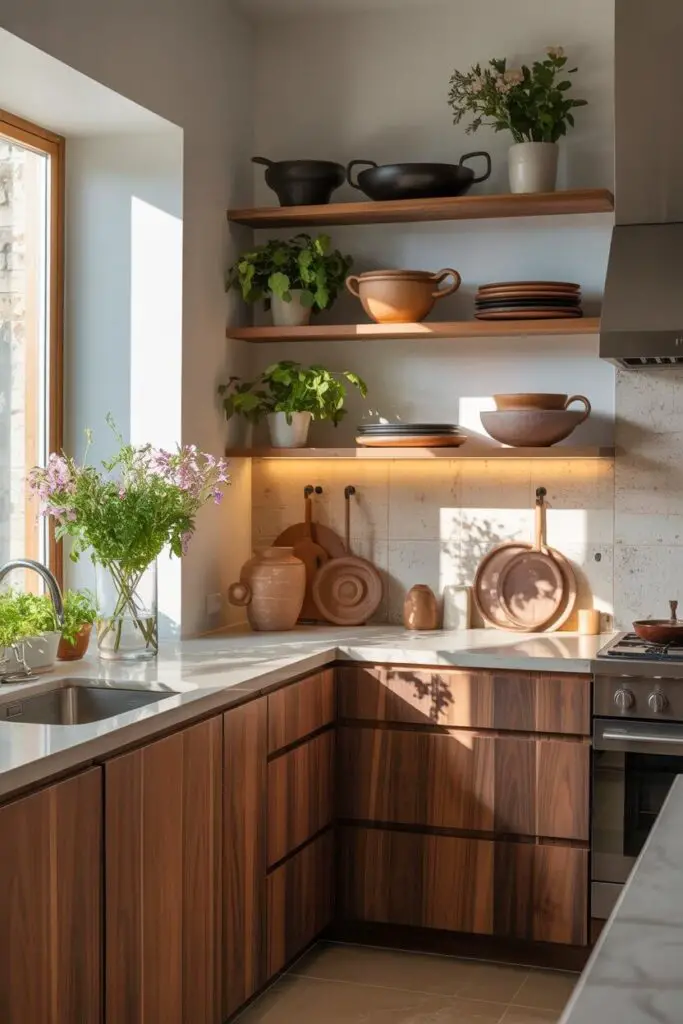
Wood is the OG natural texture — and in modern kitchens, it’s the antidote to all that sleek, hard surface.
Ways to Add Wood
- Cabinetry: Choose flat-panel cabinets in walnut, oak, or ash to keep the modern profile while adding warmth.
- Open Shelving: Perfect for displaying ceramics, plants, or cookbooks (bonus: it breaks up long runs of cabinets).
- Ceiling Beams: Even a single beam in a light wood tone can change the feel of the room.
Personal note: I once swapped out glossy upper cabinets for slim oak shelves in a client’s kitchen — they texted me weeks later to say they now want to spend more time cooking.
That’s the wood effect.
Step 3: Let Stone Do the Heavy Lifting
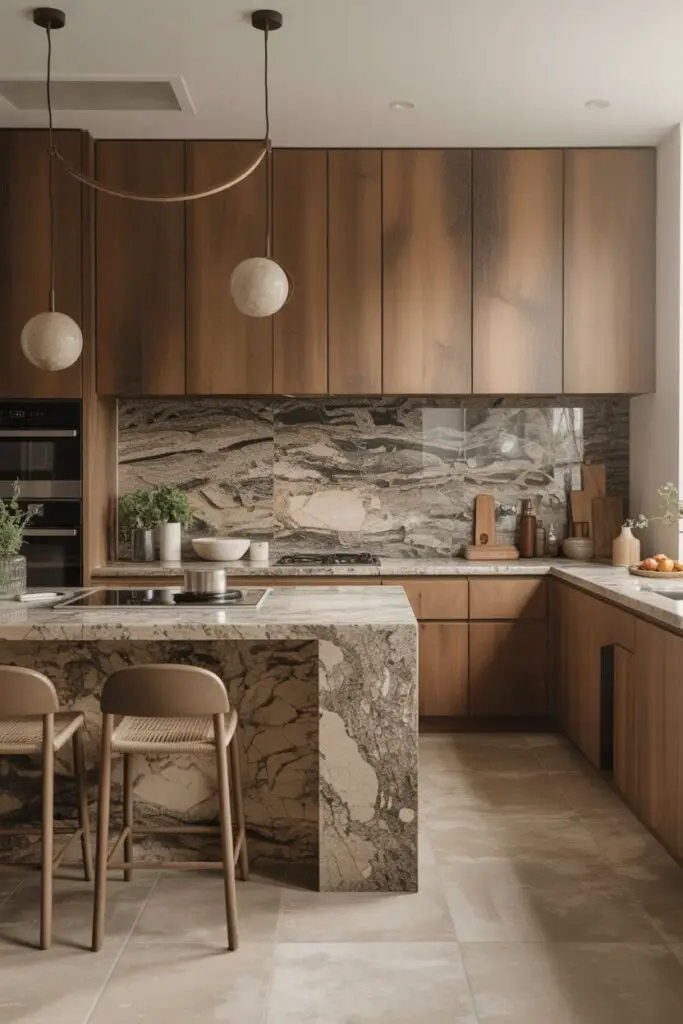
Natural stone screams luxury, but in a modern kitchen, it’s also a chance to add raw, tactile beauty.
Best Uses for Stone
- Countertops & Islands: Marble, quartzite, or granite with natural veining adds visual movement.
- Full-Height Backsplashes: Forget small tiles — a slab backsplash in stone feels bold and custom.
- Flooring: Honed limestone or slate underfoot adds an earthy grounding effect.
Pro tip: Honed or leathered finishes highlight texture better than polished — plus, they hide smudges. Your future self will thank you.
Step 4: Mix Metals with a Natural Edge
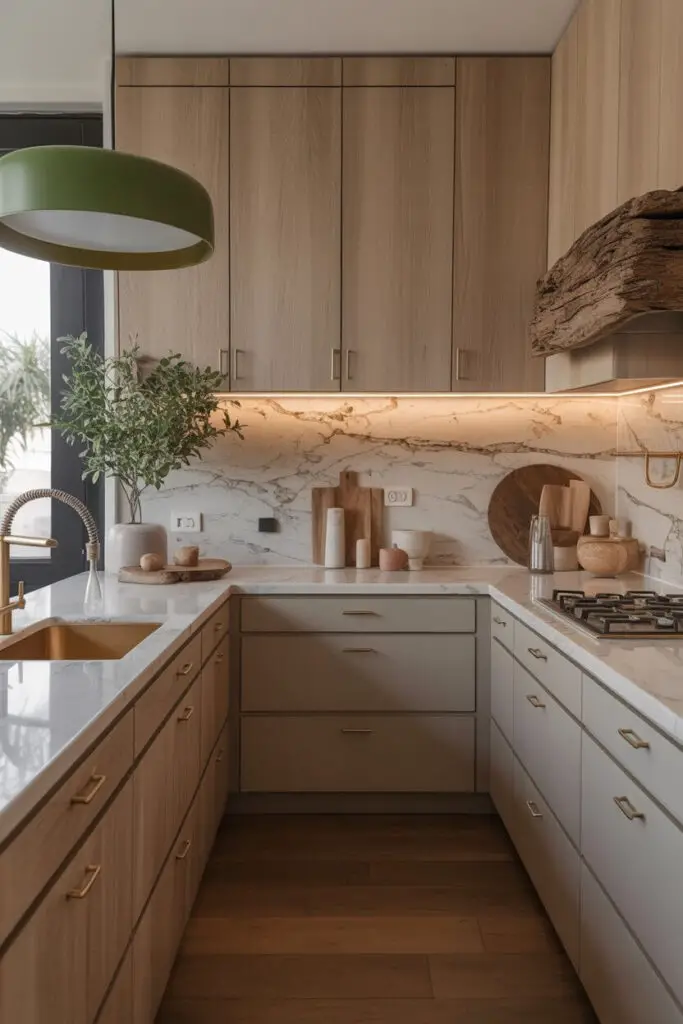
Metal is a staple in modern kitchens, but you can choose finishes that feel warmer and more organic.
- Brushed brass pairs beautifully with wood and stone.
- Aged copper adds richness (and patina over time).
- Matte black hardware looks sleek against textured natural materials.
Why it works: Combining reflective and matte metal surfaces creates depth, especially against wood grain or stone veining.
Step 5: Add Texture Through Flooring
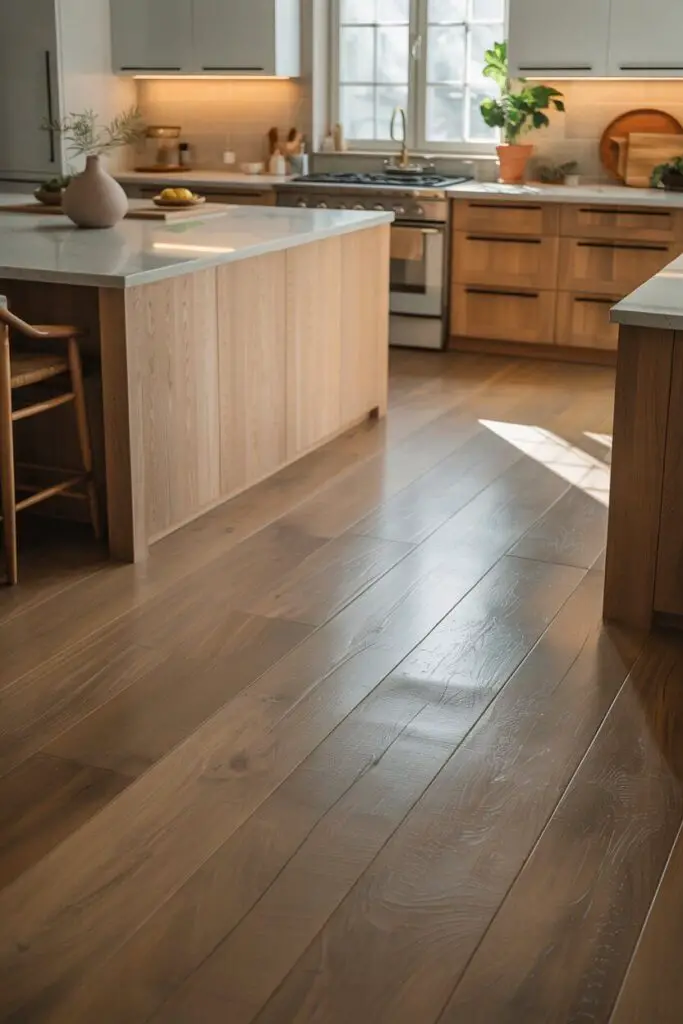
Flooring is a huge surface area, which makes it a prime place to work in texture.
- Wide-plank hardwood — warm and timeless.
- Stone tile — brings durability and a grounded feel.
- Textured porcelain — mimics natural stone or wood with less maintenance.
FYI: If you’re going bold with textured floors, keep countertops simpler to avoid visual overload.
Step 6: Bring in Woven and Fabric Elements
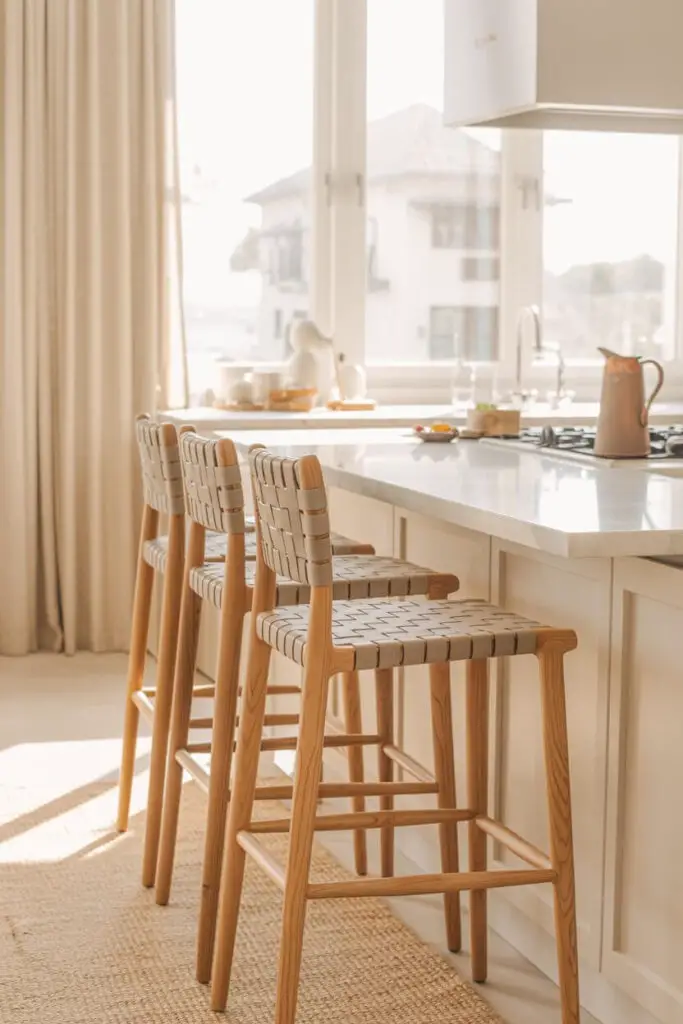
This is where the tactile side of texture really comes alive.
- Bar stools in woven leather or rattan.
- Rugs or runners in natural fibers like jute or sisal.
- Window treatments in linen or cotton blends.
Personal anecdote: I once used woven leather bar stools in an all-white kitchen — they completely changed the energy, making it more “boutique hotel breakfast” than “operating room.”
Step 7: Play with Contrast
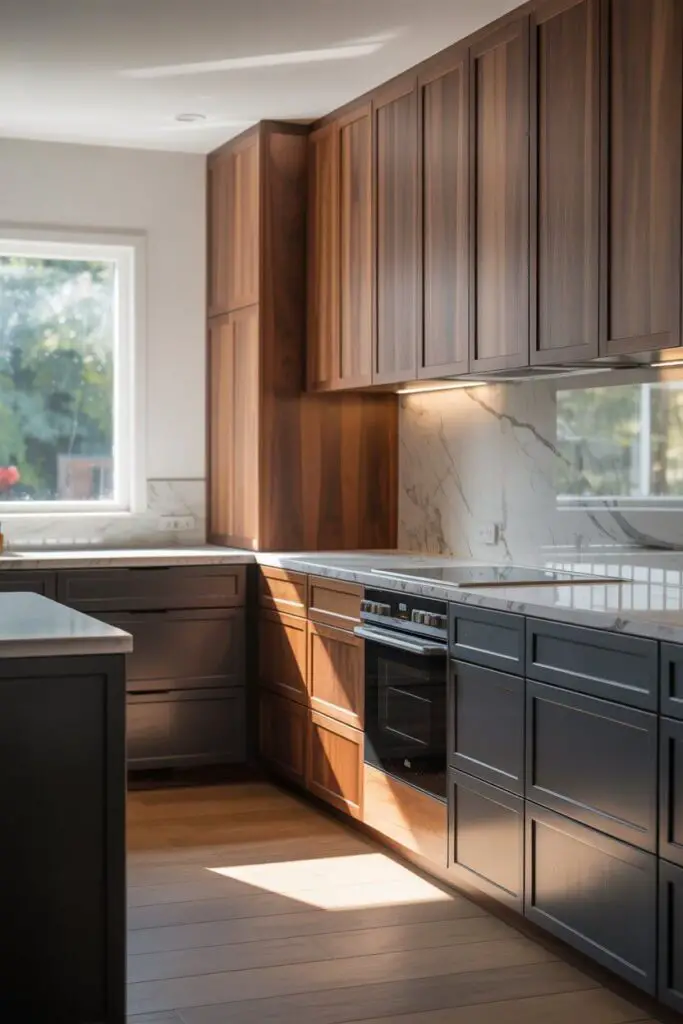
A luxury modern kitchen thrives on contrast — and natural textures give you endless ways to achieve it.
Ideas
- Dark walnut cabinets with white marble counters.
- Light oak floors with matte black island panels.
- Polished quartz with rough-cut stone backsplash.
Why it matters: The push-pull between smooth and textured surfaces keeps the design interesting.
Step 8: Don’t Forget the Ceiling and Walls
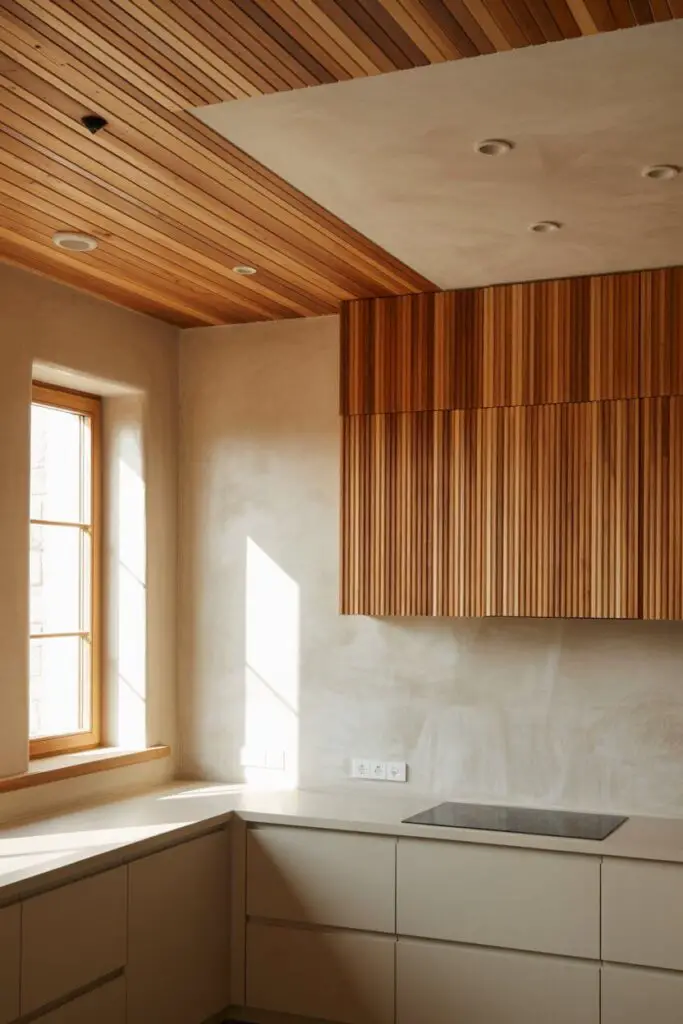
Your vertical and overhead surfaces are texture opportunities, too.
- Wood cladding on a feature wall.
- Plaster or limewash finishes for a subtle, tactile backdrop.
- Exposed brick sealed for a clean, luxe finish.
Step 9: Use Texture to Highlight Zones
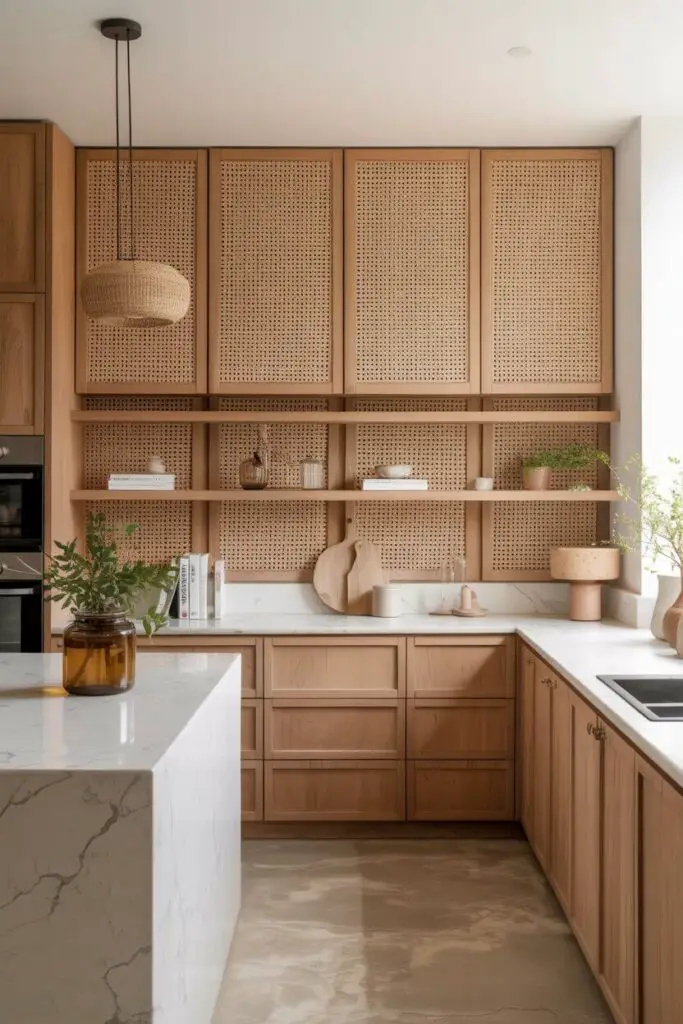
In open-plan kitchens, textures can help define areas without walls.
- Different countertop materials for the island and perimeter.
- Change in flooring texture between kitchen and dining.
- Accent wall textures behind open shelving.
Step 10: Style with Organic Accessories
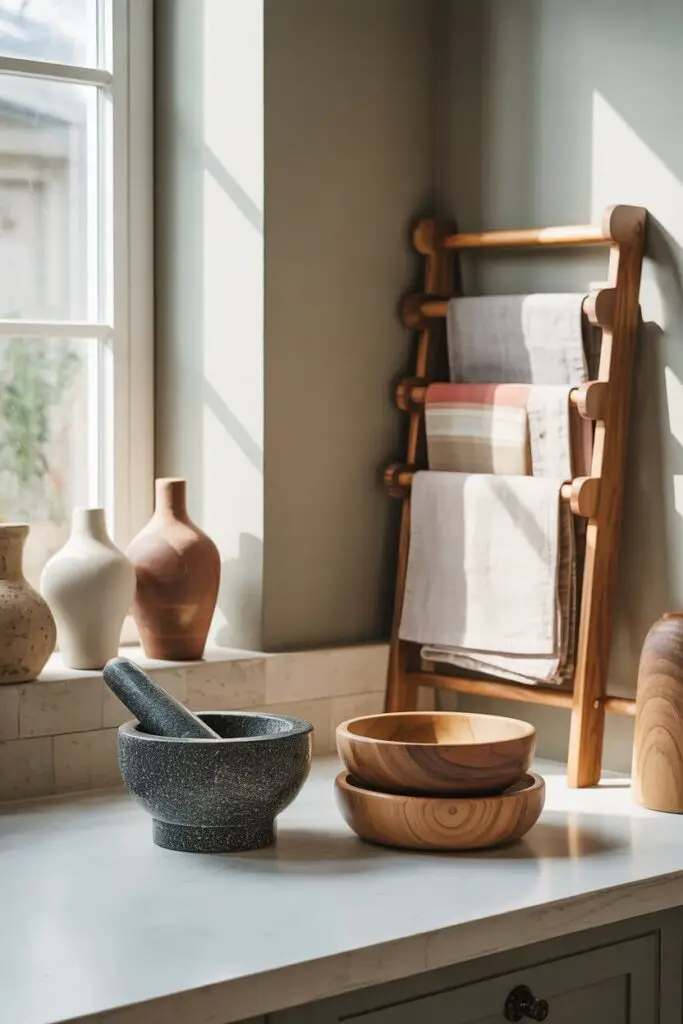
Once the big design elements are in, finish with smaller texture hits.
- Wooden bowls
- Stone mortar and pestle
- Ceramic vases
- Linen napkins on display
Tip: Group accessories in threes for balance and keep color palettes restrained to let texture be the hero.
Step 11: Keep the Modern Balance
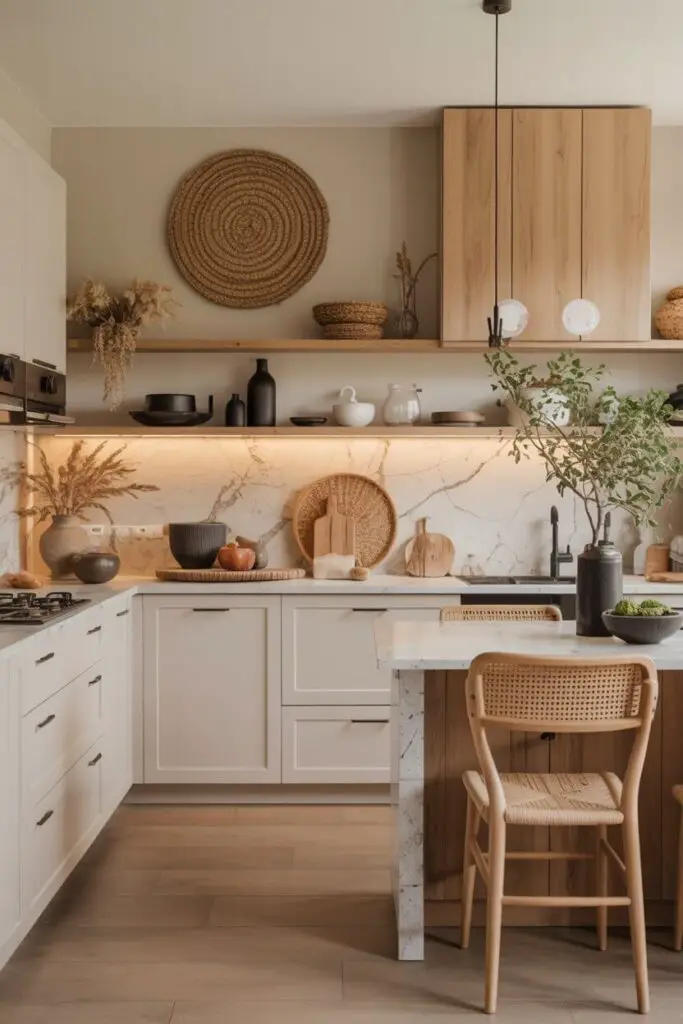
The trick with natural textures in a luxury modern kitchen is restraint. Go overboard and it starts to feel rustic instead of refined.
Rules of thumb:
- Limit yourself to 3–4 main textures.
- Repeat each texture at least twice in the space for cohesion.
- Balance every textured element with a sleek, smooth one.
Step 12: Light It for Drama
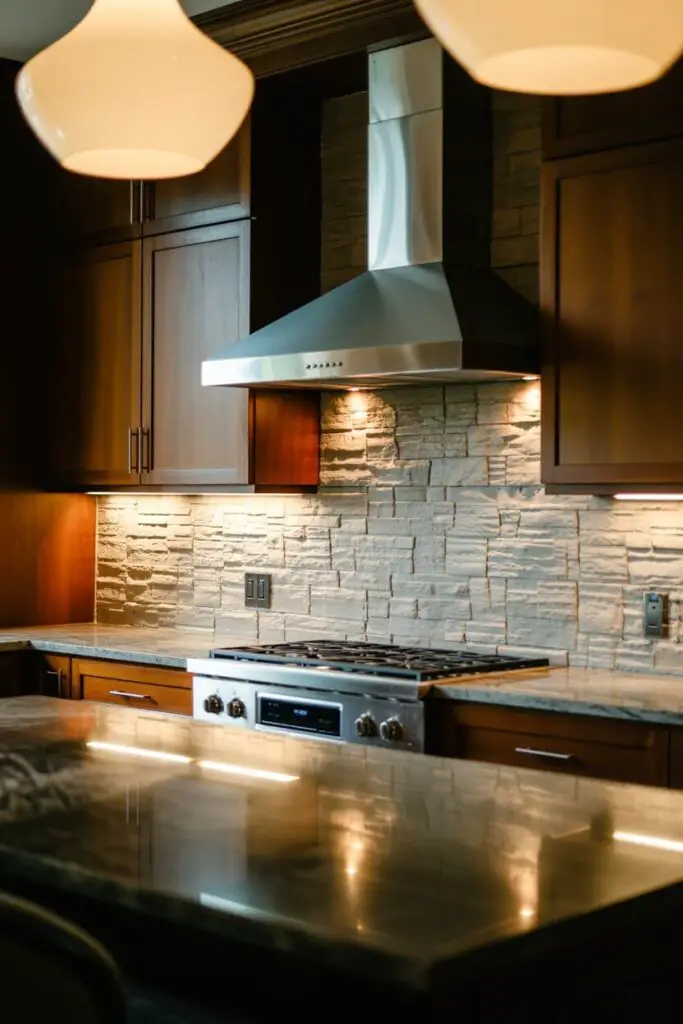
Lighting transforms how textures look.
- Under-cabinet lighting highlights stone backsplash details.
- Pendant lights with warm bulbs make wood tones richer.
- Wall washers can skim across textured walls for shadow play.
Personal note: I once installed wall-grazing lights over a rough stone wall in a kitchen — it became the most Instagrammed corner of the house.
Step 13: Plan for Maintenance
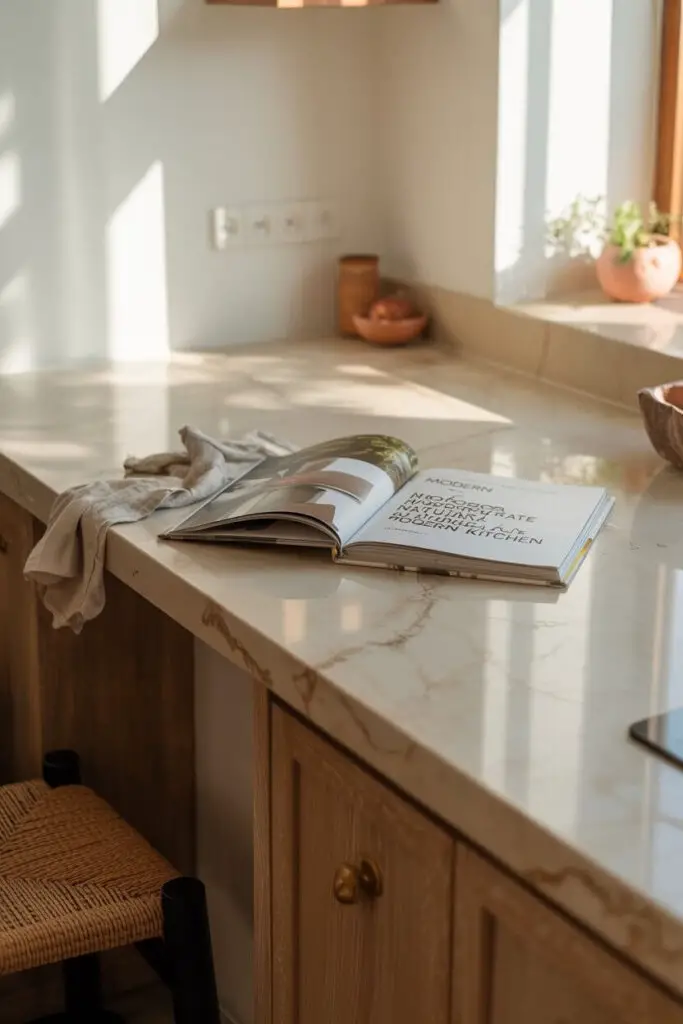
Some natural textures are more high-maintenance than others.
- Marble stains and etches but ages gracefully if you accept patina.
- Wood may need refinishing but brings irreplaceable warmth.
- Natural fiber rugs aren’t best under messy cooking zones but work for breakfast nooks.
Step 14: Tie It All Together with Color
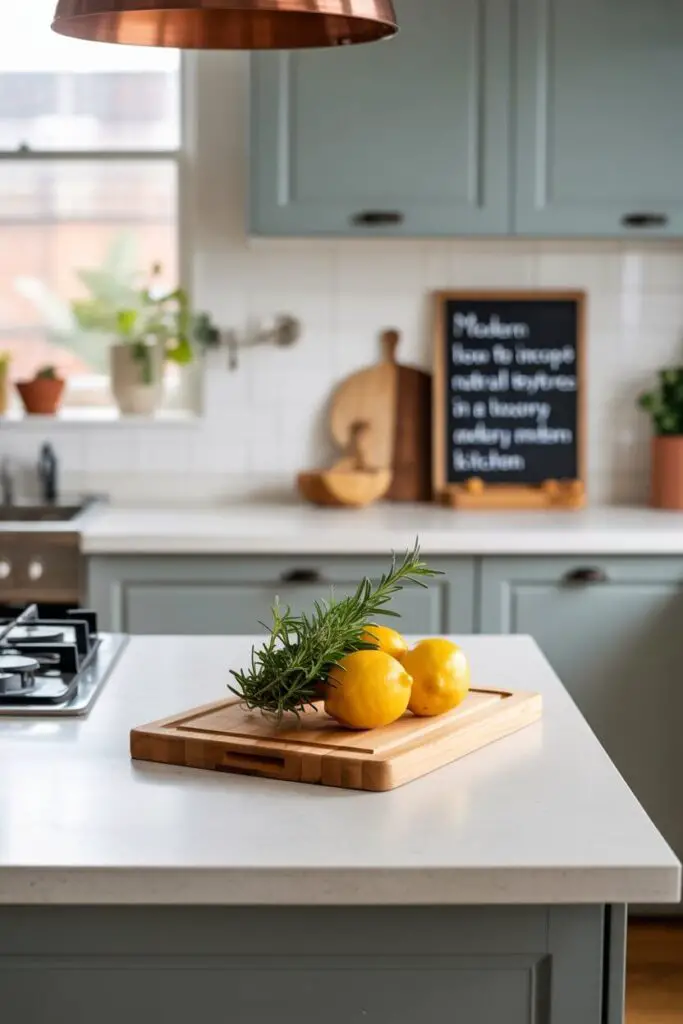
Natural textures pop best against the right color scheme.
- Wood warms up against soft whites and muted greys.
- Stone stands out against deep, moody hues.
- Metals shine brightest with contrasting backgrounds.
Step 15: Trust Your Senses
Luxury design isn’t just about how things look — it’s how they feel.
- Run your hands over samples before choosing.
- See how textures look in different light throughout the day.
- Layer materials until the space feels balanced.
Conclusion: Natural Texture is the Secret Ingredient
Incorporating natural textures in a luxury modern kitchen is less about stuffing every surface with “earthy” materials and more about curation.
It’s about knowing where to add warmth, where to go sleek, and how to layer materials so the space feels both modern and inviting.
If you:
- Pick a clear mood,
- Layer 3–4 well-chosen textures,
- Balance them with sleek modern finishes,
…you’ll end up with a kitchen that has depth, soul, and lasting appeal.
And IMO, there’s nothing more luxurious than a modern kitchen that actually makes you want to linger. 🙂